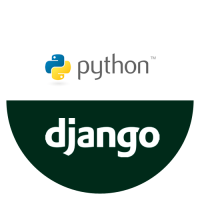
Model Relationships
18-Jan-2024Master Django model relationships with our quick guide. Explore the intricacies of creating connections between models for robust data organization in your web applications.
Overview
Django simplifies the establishment of relationships between models, enabling the creation of a well-connected and organized database. This documentation provides insights into defining and leveraging model relationships.
Type 1 : One-to-One Relationship
Every record in one model is linked to exactly one record in another model in a one-to-one relationship.
Example :
class Pet(models.Model) : name = models.CharField(max_length=50) species = models.CharField(max_length=50)class PetMedicalRecord(models.Model) : pet = models.OneToOneField(Pet, on_delete=models.CASCADE) vaccination_status = models.BooleanField(default=False) last_checkup_date = models.DateField()
In this scenario, each pet has a unique medical record captured in the PetMedicalRecord model, forming a one-to-one relationship.
Type 2 : One-to-Many Relationship
Each record in one model can be related to several records in another, whereas each record in the second model is connected to a single record in the first, according to a one-to-many relationship.
Example :
class Manufacturer(models.Model): name = models.CharField(max_length=100) location = models.CharField(max_length=150)class Product(models.Model): manufacturer = models.ForeignKey(Manufacturer, on_delete=models.CASCADE) product_name = models.CharField(max_length=200) price = models.DecimalField(max_digits=8, decimal_places=2)
In this example, a manufacturer can produce multiple products, but each product is associated with only one manufacturer.
Type 3 : Many-to-Many Relationship
A many-to-many relationship implies that each record in one model can be linked with multiple records in another model.
Example :
class Teacher(models.Model): name = models.CharField(max_length=100)class Classroom(models.Model): teachers = models.ManyToManyField(Teacher) room_number = models.CharField(max_length=10)
In this scenario, a teacher can be assigned to multiple classrooms, and a classroom can have multiple teachers.
Navigating Relationships
Once relationships are established, you can traverse them using querysets. For instance, to retrieve all books by a specific author :
author = Author.objects.get(name='J.K. Rowling') books_by_author = author.book_set.all()
Conclusion
Building a robust and networked database in Django requires an understanding of and efficient use of model relationships. Select a relationship type that improves the overall cohesiveness of your application and fits in with your data structure.


